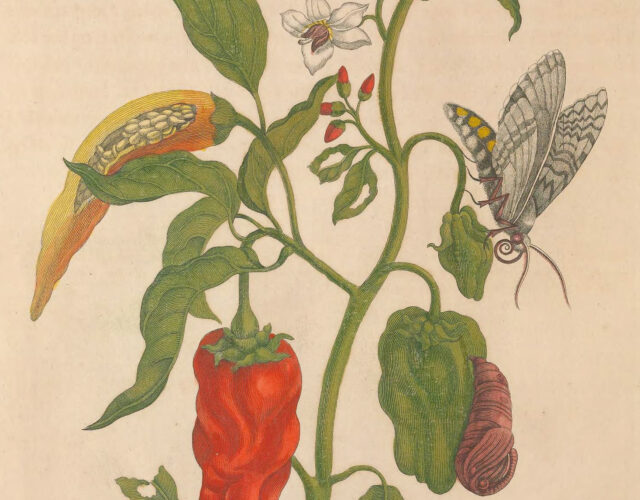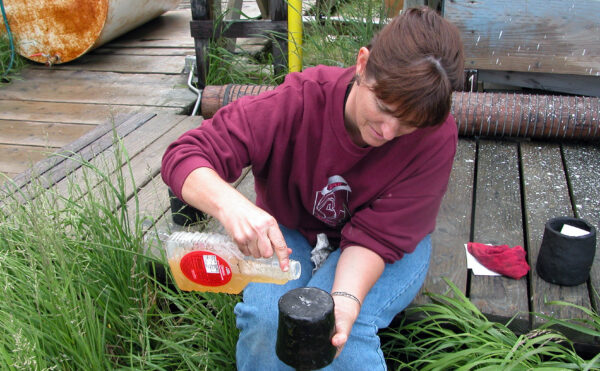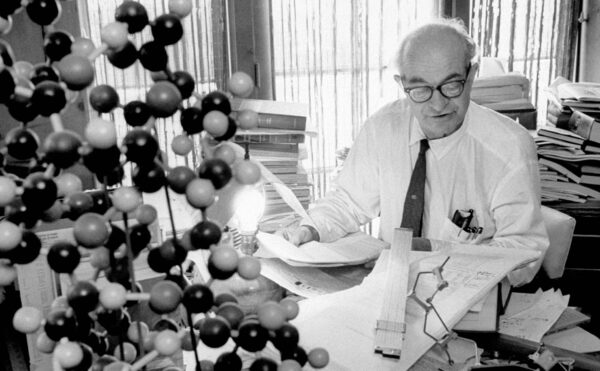At first glance the room looks like something out of an old-time apothecary shop, with rows of colorful, tiny bottles lining the shelves. But on closer inspection the scorpions, skulls, and hazmat signs decorating the bottles come into focus. These little vessels hold hot sauce, some of the hottest in the world, and all the warning signs serve as a welcome mat.
The ability to love something innately negative is a general feature of being human, says Paul Rozin, a University of Pennsylvania psychologist who has spent his career studying what he calls “benign masochism.” Hot peppers offer one of the best examples of this paradoxical attraction. After all, they are pain and pleasure all wrapped up in one colorful package. Chemists and other researchers have also explored this duality, studying the molecular mechanisms that produce the heat, and have found that the compounds responsible may unlock a way to blunt pain.
Capsaicin, the most common source of the burn in a hot pepper, is the basis for several painkillers. The benefits of the compound will come as no surprise to pepper enthusiasts.
“There’s a group of people who actually catch a buzz from eating a super-hot food,” says Ed Currie, who breeds the hottest pepper in the world, the Carolina reaper. Currie’s reaper sauce sits on the top shelf of the hot-sauce shop I frequent, out of reach of any “chili head” amateur.
You can see videos of Currie, always sporting a beige cap with the logo for his Puckerbutt Pepper Company, trying sauces and pepper oils on his YouTube page. In one clip Currie calmly steers a van full of friends down a highway while downing concentrated pepper oil, a concoction four to five times hotter than the hottest pepper in the world.
“We’re idiots,” he says, laughing when I ask him about the videos.
This is what capsaicin does: it makes otherwise mellow, middle-aged men giggle like teenagers. It burns and comforts; it can bring relief to arthritic knees, itchy skin, aching sinuses. It shapes entire cuisines. Here’s how.
There are two main reasons plants may have evolved the chemical ability to produce capsaicinoids, a group of compounds that includes capsaicin and a few others that cause heat in hot peppers. The capsaicinoids kill some plant pathogens and also discourage certain animals, such as rodents, from chewing the plant’s seeds. Birds, which lack the ability to detect capsaicin, are the plants’ preferred target since they will swallow the seeds whole and disperse them in their droppings. By producing capsaicin, plants are creating fruit that “burns” mammals but not birds. We humans never got the memo. It’s still up for debate as to why people started eating peppers in the first place. One reason may have to do with capsaicinoids’ ability to protect plants from pathogens. Researchers have linked higher levels of capsaicinoids in wild peppers in South America to lower levels of a fungal pathogen. Capsaicin’s antimicrobial effects seem to protect these plants from the fungus, and by doing so the compound may have made such fruit more appealing to humans. Plus, adding hot peppers to a meal could mask the taste of rancid meat.
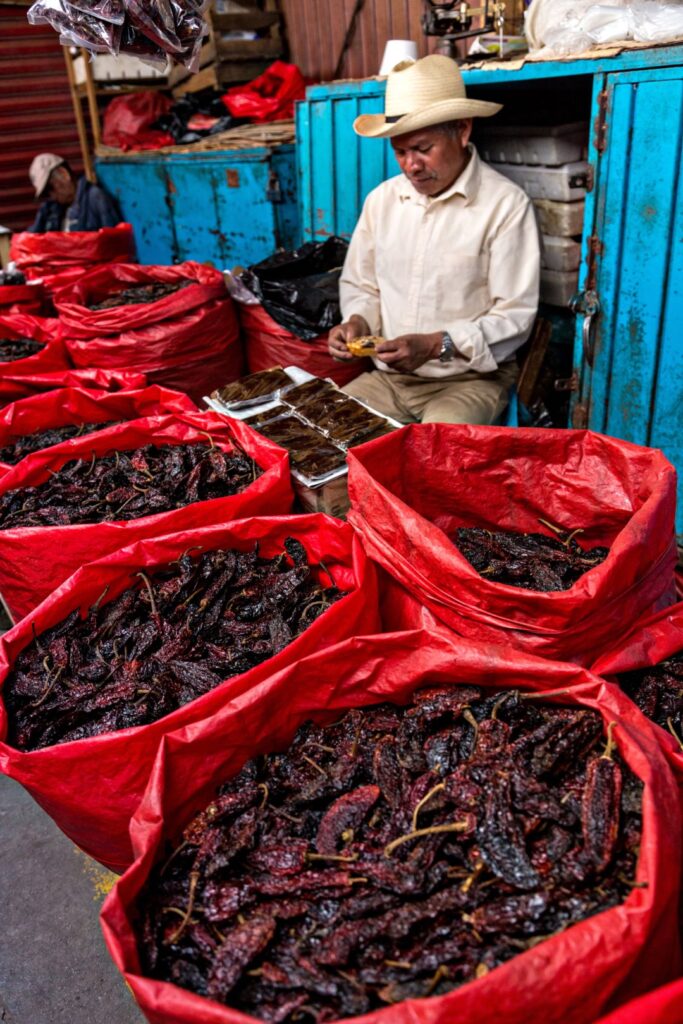
Others suggest that humans started eating hot peppers for many reasons, including what chili heads describe as the high they get from the rush of heat and the counterintuitive cooling effect hot pepper–induced sweating can cause. It could be humans started eating hot peppers just because they were there and kept eating them because of the cultural practices that sprang up as people embraced benign masochism.
“We get to enjoy the fact that our body is telling us something should be rejected or avoided, but we know that we’re really safe,” says Rozin. “We’re smarter than our body, and that gives us a certain pleasure.”
While it’s hard to tease out what led people to stick with the pepper long enough to build cultures around it, anthropologists and scientists have some ideas. Scientists have found evidence of wild pepper harvesting in Mexico 8,000 years ago and cultivation of the pepper in the Americas at least 6,000 years ago. The pepper made its way to Europe after the Spanish conquest of South America in the 1500s and spread to the rest of the world by 1540.
Different cultures may in part define their identities based on how they use the hot pepper. In a 2009 essay Esther Katz, an anthropologist at France’s Institute of Research and Development, argues that in Europe and Mexico the pepper serves as a regional identity marker. Mexican food culture is associated with the dried hot chili pepper, while Hungarian culinary identity is synonymous with dried, powdered bell pepper in the form of paprika. Meanwhile, mild bell peppers are tied to the cuisines of southern Italy and Spain. In Peppers: Botany, Production and Uses archaeobotanist Linda Perry writes that people in both China and India insist the pepper’s origin lies in their continent. “Clearly, chilies are of such cultural significance,” Perry writes, “that they were not only quickly adopted into different cuisines, they were also rapidly incorporated into local histories.”
Ed Currie is part of the ever-evolving culture surrounding hot peppers. For him hot peppers offer something unusual—a safe vice. Currie quit drugs and alcohol in 1999. These days he gets a rush from spicy foods.
“I’ve been in recovery for 20 years, so it’s the closest thing to getting high that I can do without having any bad reaction,” he says.
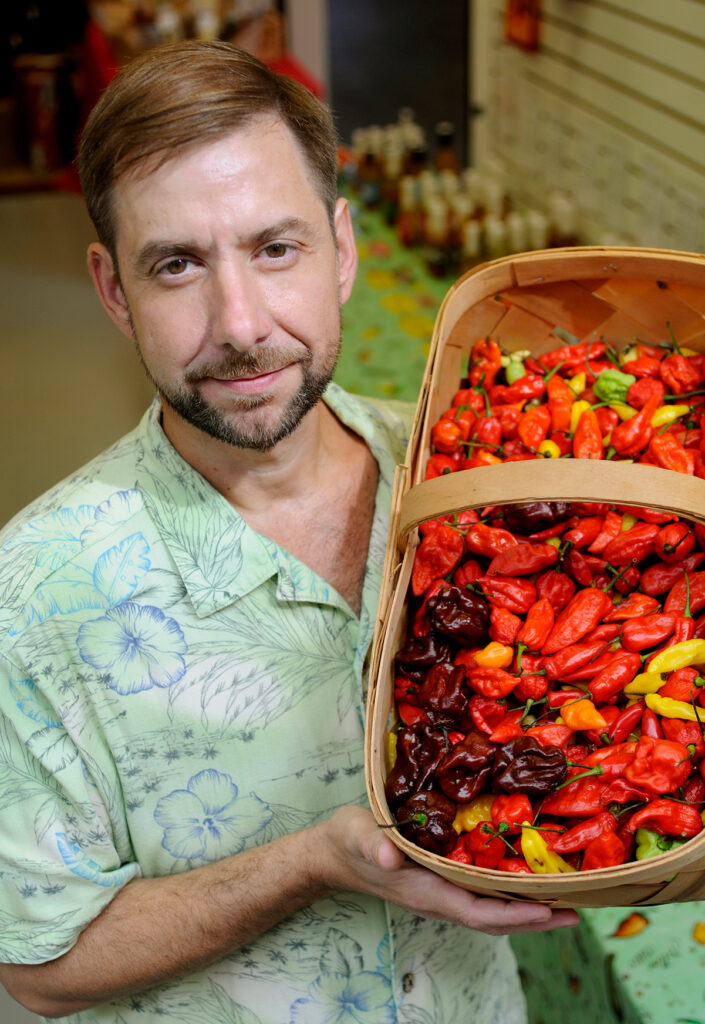
Currie eats peppers “every day, all day long.” On the day of our interview he says he’d taken capsaicin drops four different times, tested a sauce, probably consumed 8 to 10 peppers’ worth of material, “and the day is young.” Currie is a self-taught gardening guru—learning on the fly and from his mother, who was a master gardener. He started growing peppers in 1981 while living in Michigan, dropping into and out of college. He wanted to tap the peppers’ health benefits to counter his wild lifestyle. “I was looking for a way to keep on partying,” he says.
Peppers ended up changing his life in more profound ways, especially after he quit drugs and alcohol.
“I met a young lady who wouldn’t give me the time of day, and I heard her say she liked salsa,” says Currie. So he whipped up some salsa for her, which got her attention. One thing led to another, and nine months later the two were married. It wasn’t long before Currie had turned his new wife’s yard into a “pepper field.”
He managed to turn this obsession into his livelihood. Soon after getting married, in 2001, Currie began breeding peppers for heat. The hot pepper he created came from crossing about 10 varieties of pepper. Within a couple of years he had produced the pepper eventually dubbed the Carolina reaper, named after his adopted home, South Carolina. In 2013 Guinness certified it as the “hottest pepper in the world.” (The specifics of Currie’s breeding program are a trade secret: fending off title contenders is an ongoing challenge.)
The Carolina reaper is far beyond what most people even get close to tasting. On the Scoville scale—a metric that rates a pepper’s heat based on its concentration of capsaicinoids—the reaper clocks in at an average 1.614 million Scoville heat units. Contrast that with the more commonly consumed jalapeño, which measures from 3,500 to 8,000 units, and you get the idea. Or maybe you don’t. It’s hard to describe the experience of eating an incredibly hot pepper. The one time I bit directly into a fresh habanero (100,000 to 350,000 on the Scoville scale), I started drooling uncontrollably. But later I felt elated. It’s a fond memory: I don’t remember the pain, just the pleasure, stupidity, and audacity.
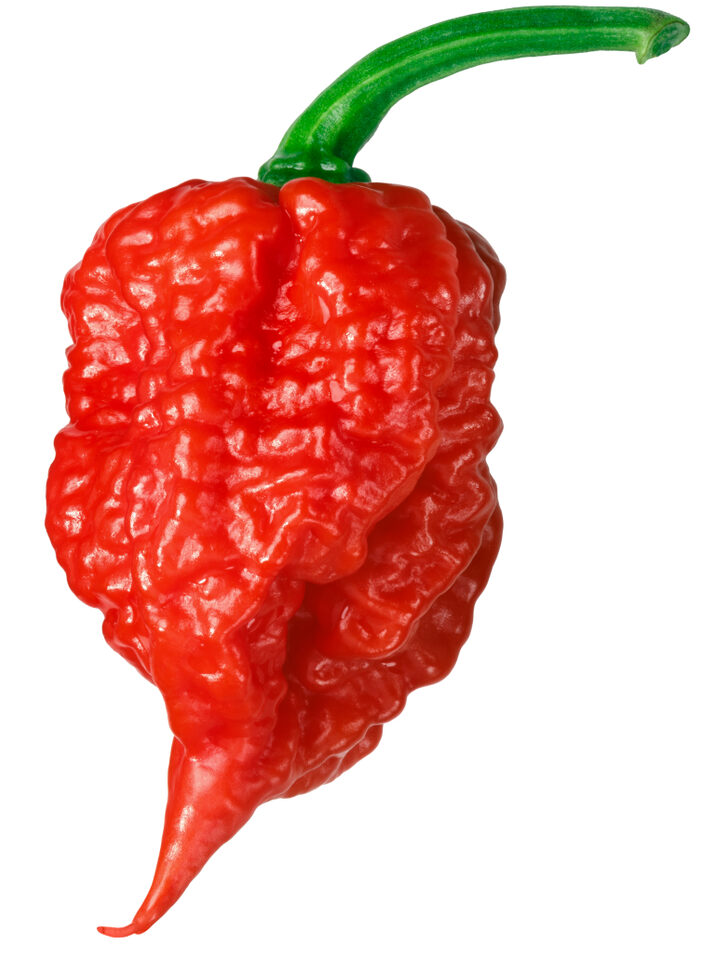
The Carolina reaper.
Somewhere in that mix lies a medicine. Currie believes in the potential for hot peppers to help with many ills, from opioid addiction to obesity. Of course the delivery method is the problem because, he says, not a lot of people “will just eat hot stuff.” He jokes, but he’s not far off base: unlocking the health benefits of capsaicin without the burn remains a challenge for drug developers. And though we’ve been consuming hot peppers for thousands of years, only in the past 20 years have we begun to understand the mystery of how our sensory nervous system responds to these chemicals.
Much of the work happened in a place not known for fiery cuisine: Hungary.
Chemist Gábor Jancsó literally grew up with capsaicin research. Until he was eight years old his family lived in one of the research departments at the University of Szeged in Hungary. Jancsó and his sister played soccer in the hallways of the university. He remembers the lab animals, including a guinea pig named William, the way most people remember childhood pets, only his pets were regularly dosed with capsaicin. His father, Nicholas (known as Miklós), and mother, Aurelia Jancsó-Gábor, researched capsaicin’s effect on pain sensation.
It was Miklós who discovered the phenomenon of capsaicin desensitization. On repeated exposure to the skin, nerve endings stop responding to capsaicin and other irritants, such as mustard oil. This phenomenon is how people build tolerance to hot food. (Miklós wrote up this discovery for a conference in 1949, but much of his other research was not published until after his death in 1967.)
In other experiments Miklós found that capsaicin could increase body heat. He painted one side of his face with capsaicin, used the other side as the control, and found that the capsaicin side was hotter, had greater blood flow, and was burningly painful. “I remember that experiment,” says Jancsó. “I caught my father red-faced.” Over a period of days and repeated exposures, the skin temperature returned to normal as he became less sensitive to the capsaicin.
Miklós’s research provided the first hint that capsaicin could affect how we feel pain, and it revealed a gateway to understanding our peripheral nervous system, the nerve fibers that send signals to the brain.
Jancsó also became a prominent researcher at the same institute, but father and son never had the chance to work together: Miklós died at age 63, just as Jancsó was entering adulthood. But the younger Jancsó followed in his father’s footsteps. In 1977 he coauthored a paper with his mother, published in Nature, showing that exposing infant rats to capsaicin blunted their ability to feel pain from the compound and other irritant chemicals for the rest of their lives.
Jancsó has written a history of his family’s capsaicin research. In it he recounts the harsh rejection he received from a prominent journal in 1987 after suggesting capsaicin be used as a painkiller. (His father had also faced skeptical audiences in his early capsaicin research.) It turns out each was a little ahead of his time.
Think of your nervous system as a series of channels, with certain compounds as the keys to opening those channels. Thanks primarily to the work of the Jancsó family and Hungarian colleagues, such as János Szolcsányi, researchers knew repeated use of capsaicin had the almost counterintuitive effect of blunting pain, closing channels that send pain signals to the brain. But exactly how that worked remained unknown until 1997.
During the 1990s, research into the molecular mechanisms behind pain took off, and the rest of the world began to take note of the earlier Hungarian research. Capsaicin had such a marked effect on nerves it was thought there existed a capsaicin receptor, a special channel on nerve cell membranes that opened for the compound.
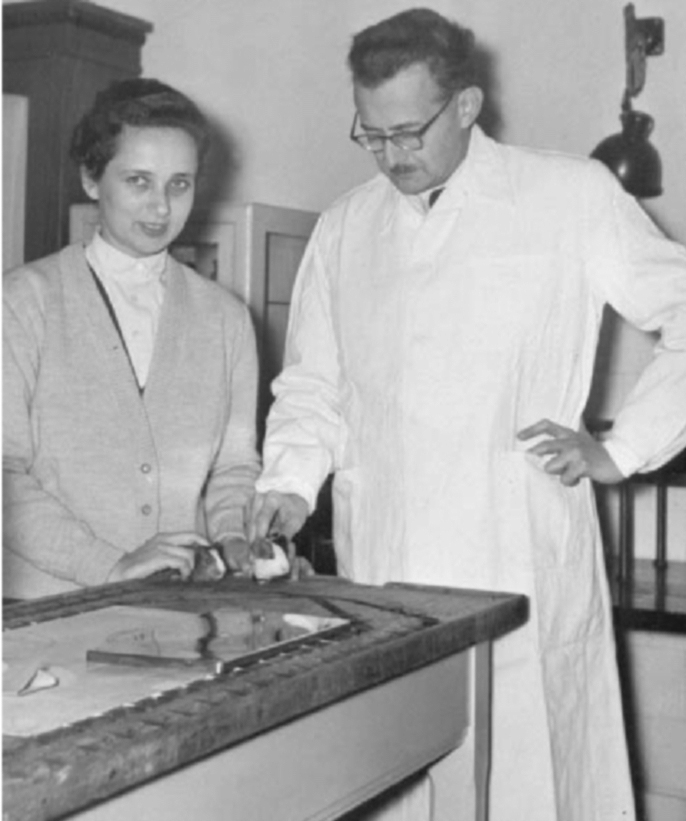
Aurelia Jancsó-Gábor and Nicholas Jancsó at the University of Szeged, late 1950s.
“Everybody sort of knew that identifying this receptor, if it did exist, could be what people would refer to as the holy grail of pain research,” says David Julius, chair of the Department of Physiology at the University of California, San Francisco. Such a receptor would provide one of the first molecular insights into how sensory nerve cells worked.
But capsaicin research required a major time commitment, with no guarantee that a single gene encoded for a capsaicin receptor, or channel. If there were multiple genes involved, it would make the search much more difficult. In the mid-1990s, Julius and his postdoctoral fellow at the time, Michael Caterina, began investigating whatever scraps of previous data they could find, including work done by Gábor Jancsó, Szolcsányi, and scientists at University College London.
What they found suggested capsaicin acts on a nerve cell’s membrane, maybe via ion channels. These channels, proteins that shape themselves to form a passage through the cell’s membrane, open to let ions flow in or out, and in doing so they cause a nerve cell to fire, sending a signal to the brain. In the case of capsaicin, as Julius and Caterina later learned, the molecule binds to its receptor and triggers an influx of positively charged calcium ions that then set up the cell to fire a message to the brain, telling it something is hot. As more and more of these ions flood in because of continued exposure to capsaicin, a feedback mechanism blocks the channel from bringing toxic amounts of calcium into the cell. This is thought to be one way capsaicin can break the function of the very channel it targets. And this is why people build up tolerance to spicy foods.
Julius and his colleagues eventually found a gene that encoded for the mystery channel, which was named transient receptor potential vanilloid subfamily member 1, or TRPV1. It turned out to be the first of many temperature-sensitive ion channels, or TRPs. Julius’s lab and others went on to discover at least eight more TRP channels that respond to heat and cold. Tantalizingly, they offer the potential to block not just pain from hot-pepper heat but many types of chronic pain as well.
Hungarian researchers weren’t the first to figure out chili peppers could blunt pain. As the pepper made its way around the world, it left a mark not only in cuisine but also in traditional medicine. In India the chili pepper was used to a treat a variety of maladies, including arthritis and toothaches. Among native communities in Nagaland, a state in northeastern India, chili plants were crushed up and rubbed on the skin to counter itching. One of the first formulations of topical capsaicin available to modern consumers came in the late 1980s with a low-dose capsaicin cream originally marketed to treat pain from shingles. But its effects were weak, and researchers concluded it was not much more effective than placebo cream. In 2009 pain researchers developed a patch for patients with chronic neuropathic pain that delivered a higher concentration of capsaicin (8%), more than 100 times the dose of the original creams, which does seem to provide more effective pain relief compared with lower-dose creams.
Companies have tried to create a painkiller, particularly in pill form, that would mimic and enhance capsaicin’s effect on the TRPV1 channel, jamming the pain pipeline to the brain. But drug development stalled after trials showed the drugs induce fever and people taking TRPV1 blockers lose their ability to detect heat of any kind. Such side effects make drug company executives nervous.
“They kind of put the kibosh on all this,” says Julius. “They get skittish about stuff.”
But the search continues. There are approximately a dozen compounds in various phases of research at different drug companies. For instance, Centrexion Therapeutics has finished two clinical trials for its injectable pain medication, which uses a synthetic form of capsaicin to relieve knee pain in those suffering from osteoarthritis.
Other firms seem to have solved the problem of keeping body temperature normal for subjects taking these drugs. NeoMed Institute in Montreal has developed a pill that blocks the TRPV1 receptor without increasing body temperature or affecting the skin’s ability to detect hot surfaces, according to its chief medical officer Dan Chiche. But NeoMed takes drug development only to phase-2 trials; they need funding from a larger company to take the next step.
Janssen Pharmaceuticals has finished its phase-1 trials of a pill, a TRPV1 blocker that also treats knee osteoarthritis. But what happens next is uncertain.
“My hope is that drug companies will circle back to these and other targets, especially now that there’s much more awareness of problems with opiates and overuse,” says Julius.
Turning capsaicin into medicine may be a funny notion: in the drug business nothing moves quickly, but the hot-pepper business thrives on impulse. Watch people eat a hot pepper, and you can see the side effects immediately: faces turn red, people sweat, and they yowl and whoop in pain. And yet, as painkillers go, these are pretty mild side effects compared with the pain of opioid addiction or the liver and cardiovascular damage that can occur with some anti-inflammatory pain relievers. At worst it seems a drug that trips up TRPV1 makes your body warm and somehow numbs your ability to feel heat.
Peppers can do more than blunt pain: they play a role in all sorts of physiological phenomena. They may even fight cancer. That’s why Currie started crossbreeding for hotter peppers in the first place back in 2001. He hoped the potent capsaicin would help his mother after she was diagnosed with an aggressive form of lung cancer. Studies have shown capsaicin suppresses tumor growth, but research has not progressed much beyond the lab.
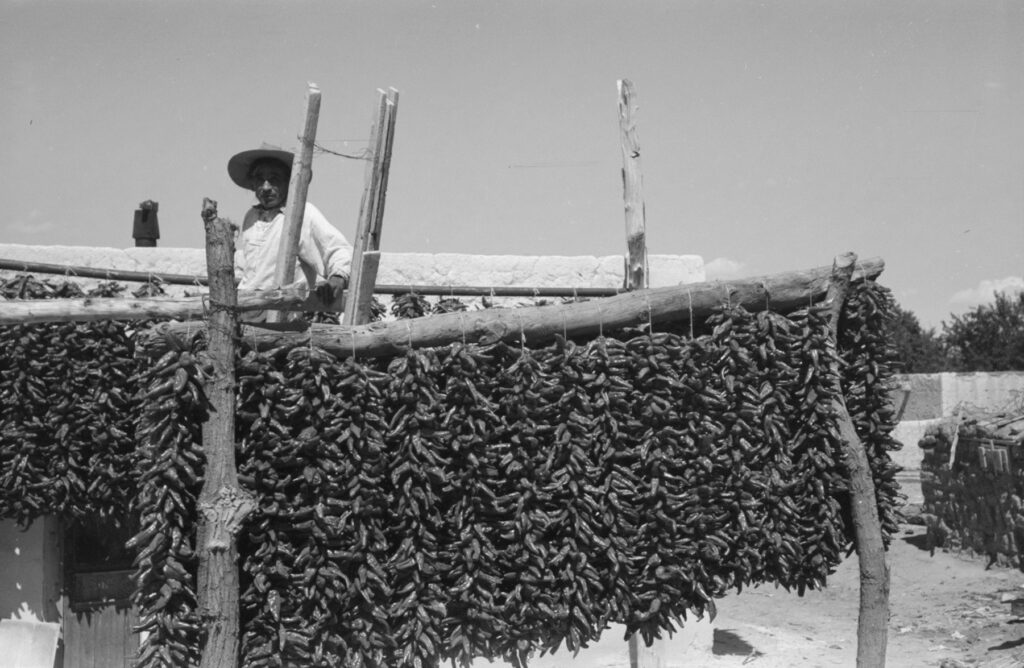
Drying chili peppers in Isletta, New Mexico, 1940.
Russell Lee/Library of Congress
That lack of real-world evidence didn’t stop his mother from eating as many peppers as she could until the last year of her life, Currie says. She believed it helped her live longer, five years past her diagnosis. “Not a lot of people last that long with lung cancer,” he notes.
And the benefits don’t come from capsaicin alone: according to Currie all the components of the peppers working together bring health gains. He counts the feeling of joy as one of those benefits.
Scientists have teased out the chemistry of capsaicin in exquisite detail, yet the reason for the appeal of hot peppers remains a mystery. They seem to make people happy, but does benign masochism alone account for that joy? According to psychologist Paul Rozin, the culture that emerges around its eating is what perpetuates the pepper.
In other words, eating hot things is probably more fun because you associate the experience with laughing friends, family, and tasty food.
Currie sees this every day in his store: tame consumers converted to chili heads.
“The proof is in the pudding,” says Currie. “People come into our store and they say, ‘Oh, I only like the mild stuff,’ and within a year they’re eating the hottest stuff in there.”

